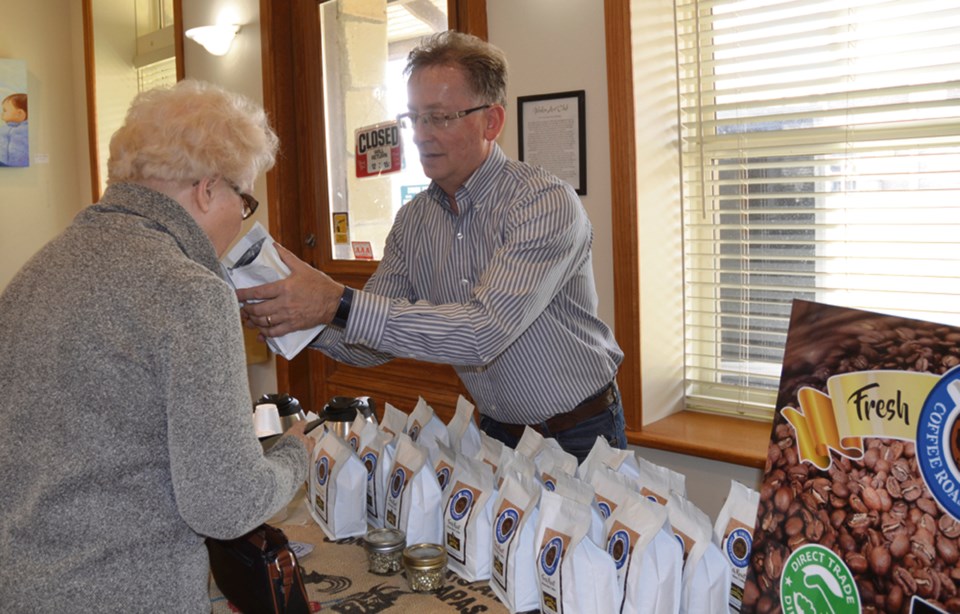I met Mike Hatfield over a steaming cup of coffee at an artists’ reception in Virden not long ago. I’ve never met anyone with so much coffee knowledge and so much enthusiasm for the subject!
Hatfield is a semi-retired insurance broker who lives in Oak Lake with his wife Eileen. He’s been drinking coffee most of his life, but a holiday in Mexico shifted his thinking about his favorite drink completely.
“My wife and I were travelling in Puerto Morelos, Mexico a number of years ago when I had my first really amazing cup of coffee… My server told me the resort bought their coffee beans from a local roaster… I spent a full week in total coffee bliss.”
That launched him on a quest back in Canada, trying new varieties of coffee beans and roasting them in small batches for himself, family and friends.
Word spread and demand grew so he bought a commercial roaster and began selling his products online and at Virden’s Hi-Way Grocery under the name Cornerstone Coffee Roasting Co.
I asked him to share some of what he’s learned about the bean and the brew over the years:
1) There are two main species of coffee plant - Arabica and Robusta. Robusta beans (with their burnt-rubber flavours) have a much higher caffeine content than Arabica, but are considered inferior. Arabica coffee requires high altitude to grow and a climate with distinct rainy and dry seasons.
2) Coffee beans go through colour phases.
The “bean” is actually the pit of a red fruit called a coffee cherry. The pit inside the cherry is a light green. It turns from green to brown when it’s roasted and the natural sugars and oils are taken to around 250°C. That’s when they caramelize, creating the rich brown, oily beans we know and love.
3) It takes a lot of water to produce one cup of coffee.
It takes around 100 litres of water to grow and process enough beans for one cup of coffee.
4) Coffee was discovered by goats!
Legend has it that a goat herder discovered coffee when his goats ate some coffee cherries and went a bit wild with the caffeine high. The fact is, coffee was originally eaten by humans as a food rather than a drink. Early African tribes would mix the coffee fruit and seeds with animal fat to make a sort of energy snack.
5) Coffee and petroleum products have something in common.
Coffee is the second most traded commodity around the world after oil.
6) Most coffee is harvested by hand.
The vast majority of quality coffee is hand picked. Around 25 million farmers around the world depend on growing coffee for their livelihoods, the vast majority in relatively poor countries. So how you choose to buy your coffee can have a significant impact on their lives.
7) The world’s weirdest and most expensive coffee is….
… kopi luwak. Originally from Indonesia, this unique coffee is harvested after being digested and excreted by the Asian palm civet, a small catlike mammal. They say the digestion process gives the coffee a complex, rounded taste. Consumers are willing to pay $50 or more per cup.




